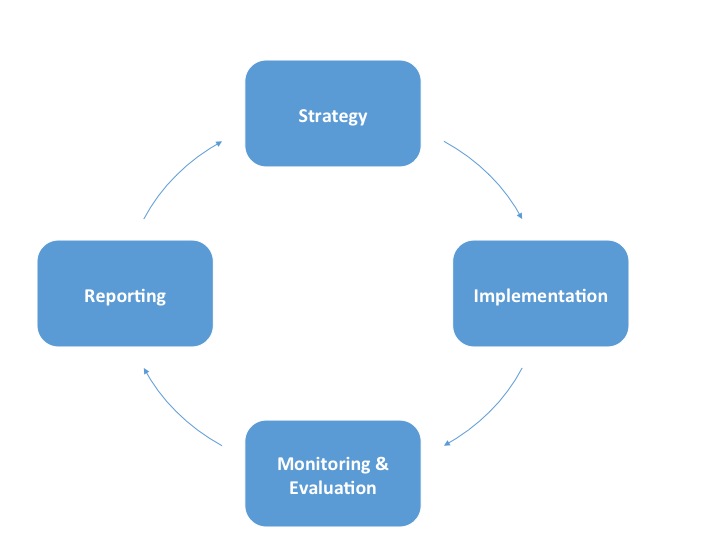 Katie McGarry, KPMG
Katie McGarry, KPMG
 Rob Brouwer, KPMG
Rob Brouwer, KPMG
Companies around the world and their charitable foundations invest billions each year in social programs that aim to address some of the world’s biggest challenges, from poverty and lack of access to healthcare or education, to natural disasters, climate change and much more. The benefit of social investments to society is significant. But who benefits from these investments and by how much? Do companies, and their shareholders, fully understand the impact of their investments? These are questions investors are considering in their investment decisions.
Beyond ‘doing good’, social investment can also add value and create significant opportunities for businesses, including enabling them to meet regulatory requirements, improve reputation, attract talented employees, increase workforce engagement and develop new products and markets.
A clear strategy for social investment, with targets and processes to measure outcomes and impacts, is just as important to social investment decisions as for any other corporate investment, and is crucial to ensuring that companies achieve the greatest impact from their investment budgets. Tracking inputs to social programs and measuring the impacts can in turn help to improve future investment strategies.
Growing Pressure to Measure and Report Social Impacts
More companies are recognizing that they need to treat social investments in a manner similar to other commercial investments, by documenting the business case for investing and ensuring that it generates an acceptable return.
Dollars spent on social investment are increasing. Accordingly, there is growing pressure on budget holders to demonstrate that investments are effective and delivering a return. Rising expectations from NGOs, shareholders and other constituencies to better understand the impact of a company's social investments also contribute to the need for companies to measure and report on impacts. Measuring and quantifying social or environmental impact and outcomes is also gaining greater prominence in corporate reporting frameworks such as the International Integrated Reporting Council (IIRC) framework.
Challenges in Measuring and Reporting Social Impacts
The key issues that companies currently face in measuring and reporting social impacts are:
- A plethora of impact assessment tools: Numerous tools and frameworks for assessing social impact have been developed across the charitable, public and private sectors, such as Social Return on Investment (SROI). For companies shifting their focus to impact assessment, it can be difficult to know where to start.
- The cost of assessment: Many companies are reluctant to divert funds from social programs and into monitoring and evaluation. Channeling a small amount of funding into resources for monitoring, measuring and evaluating social investments – even two or three percent of the total budget – can provide significant insights to make programs more effective.
- The complex task of quantifying impacts: A quantitative assessment of social impacts can involve assigning a financial value to benefits that are not commonly quantified in economic terms, such as the monetary value of increased literacy among children taking part in an education program. The challenge of putting a financial value or other objective measure on intangible social benefits can be a barrier.
- Lack of insight into how funds are spent: Companies rarely work alone to address social challenges. Some companies give funds to an NGO to run a specific program with a single objective. In this case, it can be relatively straightforward to understand whether objectives were met for the money invested. However, it is also very common for companies to give funds to a trust or an NGO that runs multiple programs and is not in a position to target funding from one party to a specific project. Measuring impacts against objectives can be challenging.
- Long time frame for measuring impact: It can take months or years for the long-term benefits of a social investment to materialize and for a company to assess whether or not program objectives were met.
- Decentralized investment approach: Many companies channel social investment funds into a range of programs chosen by local offices and employees, rather than by a central corporate function. Aggregating data on how funds were spent from multiple parts of the business can be a significant challenge.
The Best Way Forward
While measuring and reporting on social impact can be a complex and difficult process, as there are no agreed upon standards for collecting data or assessing impacts, taking certain actions can help:
Develop a clear and coherent investment strategy
- Review any existing strategy and map current investments;
- Articulate the objectives and overarching goals for the investment strategy;
- Identify the primary stakeholders intended to benefit from the investment;
- Create or revise the investment strategy to align with the business strategy and overarching objective; and
- Identify short, intermediate and long-term targets and establish key performance indicators and baselines for measuring progress.
Create a well-defined implementation plan
- Determine if any existing activities should be stopped;
- Consider if existing activities need to be realigned to the strategy; and
- Consider establishing partnerships with other organizations to implement.
Monitor and evaluate impacts
- Establish relevant monitoring and evaluation processes and data collection protocols, including:
- Identify potential sources of evidence of meeting objectives;
- Collect data on inputs, outputs, outcomes and impacts;
- Review existing social impact assessment tools; and
- Focus monitoring and evaluation efforts on the most material activities.
Steps in reporting on social impact
- Be transparent about how reported measures are defined and calculated;
- Use a combination of quantitative and qualitative information to tell the story of investments;
- Be transparent about areas for improvement; and
- Verify data and reported information.
Social Impact Measurement and Reporting Cycle

Increasingly, investors and stakeholders are requesting that companies communicate their activities, and the value of their social investments. Investor relations teams should consider how reporting and measuring social programs might support and improve their existing sustainability communications, and embrace it as another opportunity to communicate the benefits to society that the company has delivered.
Katie McGarry, CPA, CA is a Senior Manager, and Rob Brouwer, FCA is Canadian Managing Partner, Clients and Markets, for KPMG LLP in Canada.